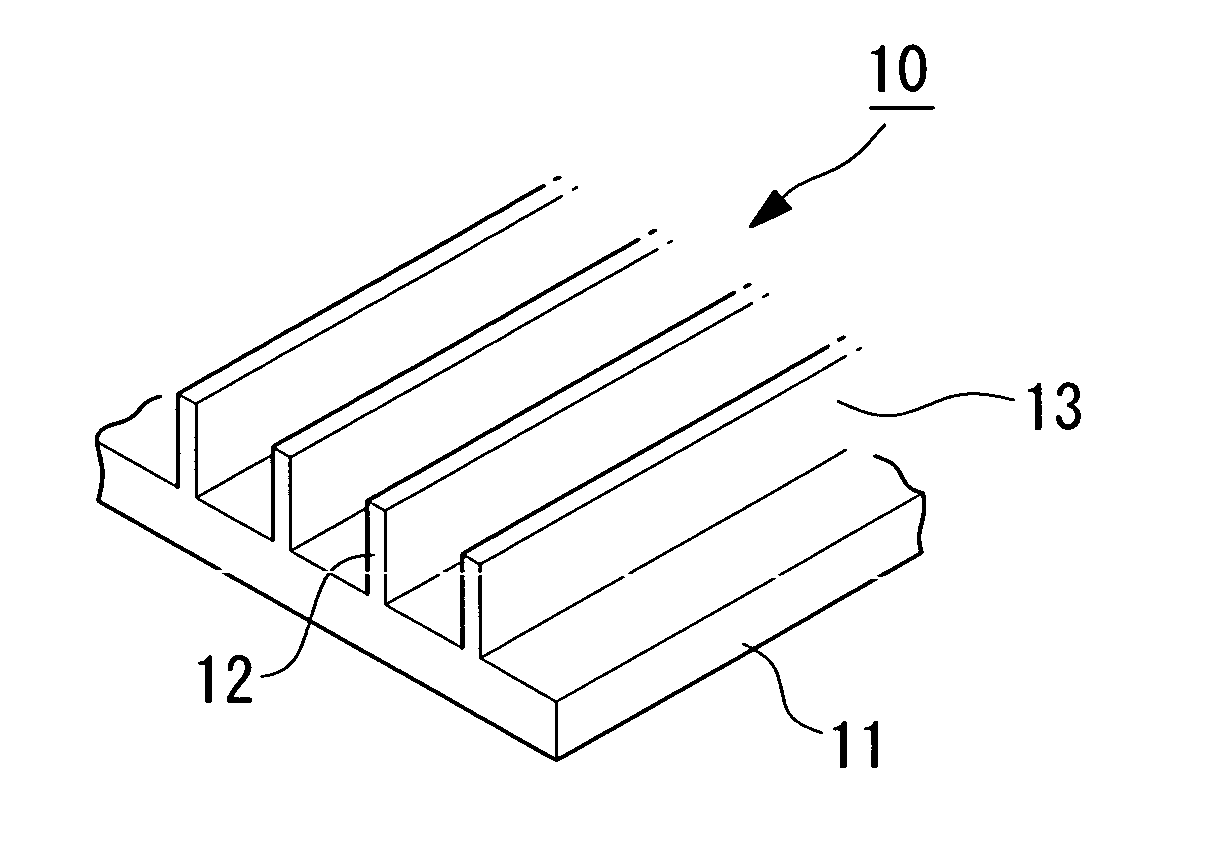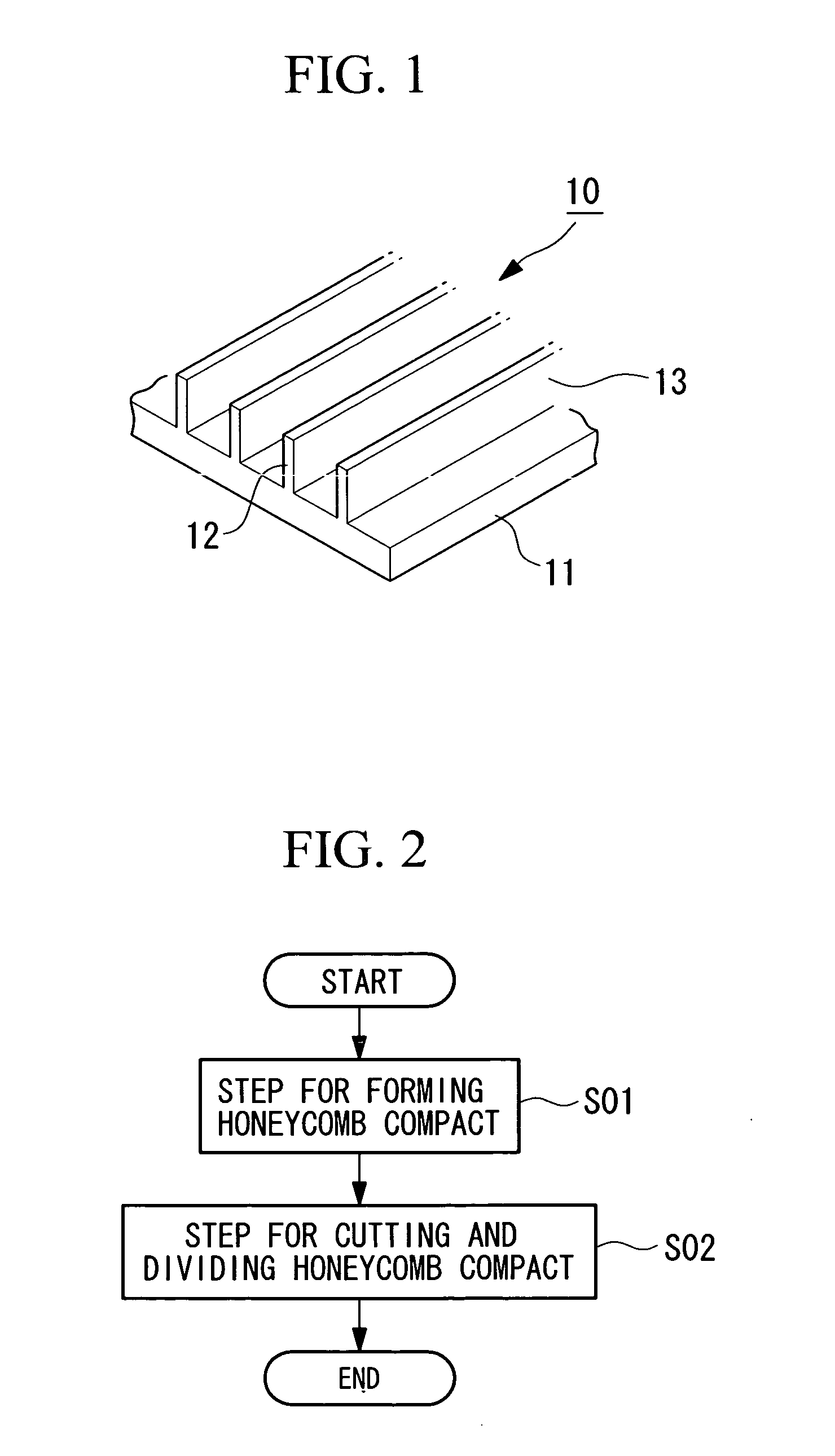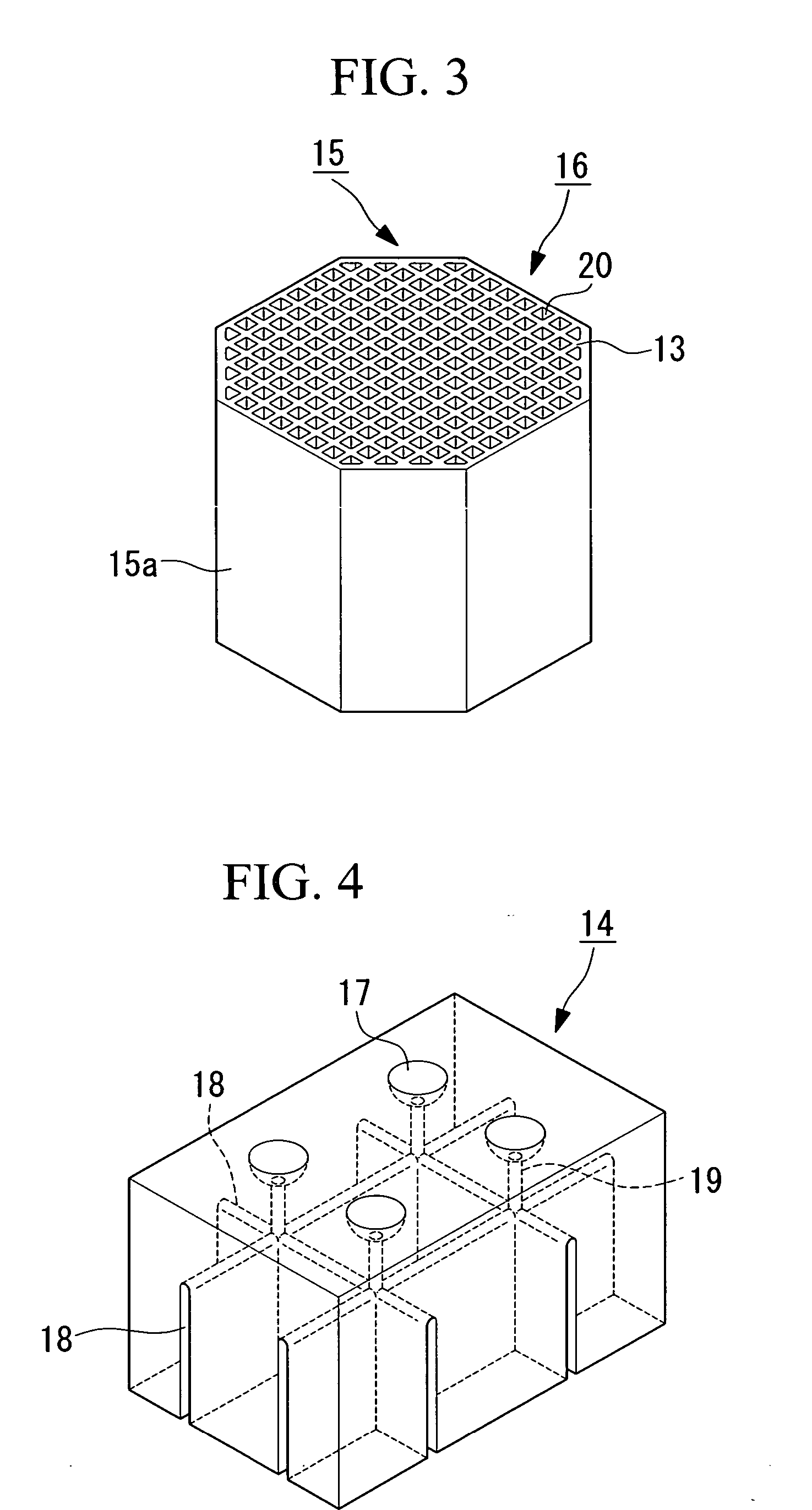Material for repairing biological tissues and process for producing the same
a biological tissue and material technology, applied in the field of biological tissue material repair, can solve the problems of insufficient demonstration of bone regenerating function, long time-consuming bone regeneration, and inability to provide straight penetrating holes, so as to achieve effective promotion of biological tissue formation and increase cell activity.
- Summary
- Abstract
- Description
- Claims
- Application Information
AI Technical Summary
Benefits of technology
Problems solved by technology
Method used
Image
Examples
first embodiment
[0037] Hereunder is a description of a material for repairing biological tissues according to a first embodiment of the present invention, with reference to FIG. 1 to FIG. 4.
[0038] As shown in FIG. 1, a bone substitute (material for repairing biological tissues) 10 according to the present embodiment is made from β-TCP as the raw material, and comprises a plate-type base member 11 on the surface of which a plurality of grooves 12 extending in a single direction are formed and separated from each other by partition wall members 13 having an almost uniform thickness.
[0039] Next is a description of a process for producing the bone substitute 10.
[0040] As shown in FIG. 2, the production process for the bone substitute 10 according to the present embodiment comprises: a step (S01) for supplying a raw material formed in a slurry form into a honeycomb mold 14, and forming a honeycomb compact 15; and a step (S02) for cutting and dividing the honeycomb compact 15. Hereunder is a descripti...
second embodiment
[0053] Next is a description of a material for repairing biological tissues according to a second embodiment of the present invention, with reference to FIG. 6 to FIG. 9. In the following description, the same reference symbols are used for components the same as those in the abovementioned embodiment, and description thereof is omitted.
[0054] The point where the second embodiment is different from the first embodiment is that in the first embodiment the material of the base member 11 of the bone substitute 10 is β-TCP, whereas in the second embodiment the material is a bioabsorbent material such as polylactic acid (PLA).
[0055] As shown in FIG. 6, the bone substitute 24 according to the present embodiment is made from PLA as the raw material, and comprises a curved base member 25 with a uniform thickness, on one surface 25a of which a plurality of grooves 12 extending in a single direction are formed and separated from each other by partition wall members 13 having an almost unifo...
third embodiment
[0072] Hereunder is a description of a material for repairing biological tissues according to a third embodiment of the present invention, with reference to FIG. 11 to FIG. 14.
[0073] A bone substitute (material for repairing biological tissues) 110 according to the present embodiment is made from β-TCP as the raw material and comprises: a honeycomb shaped main body 113 in which a plurality of penetrating holes 111 extending in a single direction are formed and separated from each other by partition wall members 112 having an almost uniform thickness; and collagens (biodegradable viscous member) 115 which are impregnated with growth factors (agonistic factor) 114 for increasing the cell activity, and filled into a plurality of penetrating holes 111.
[0074] As shown in FIG. 11, the partition wall members 112 separate the inside of the main body 113 in a concentric manner, forming a plurality of penetrating holes 111 that are formed in a sector shape.
[0075] The size of the penetratin...
PUM
| Property | Measurement | Unit |
|---|---|---|
| temperature | aaaaa | aaaaa |
| thickness | aaaaa | aaaaa |
| shape | aaaaa | aaaaa |
Abstract
Description
Claims
Application Information
 Login to View More
Login to View More - R&D
- Intellectual Property
- Life Sciences
- Materials
- Tech Scout
- Unparalleled Data Quality
- Higher Quality Content
- 60% Fewer Hallucinations
Browse by: Latest US Patents, China's latest patents, Technical Efficacy Thesaurus, Application Domain, Technology Topic, Popular Technical Reports.
© 2025 PatSnap. All rights reserved.Legal|Privacy policy|Modern Slavery Act Transparency Statement|Sitemap|About US| Contact US: help@patsnap.com



